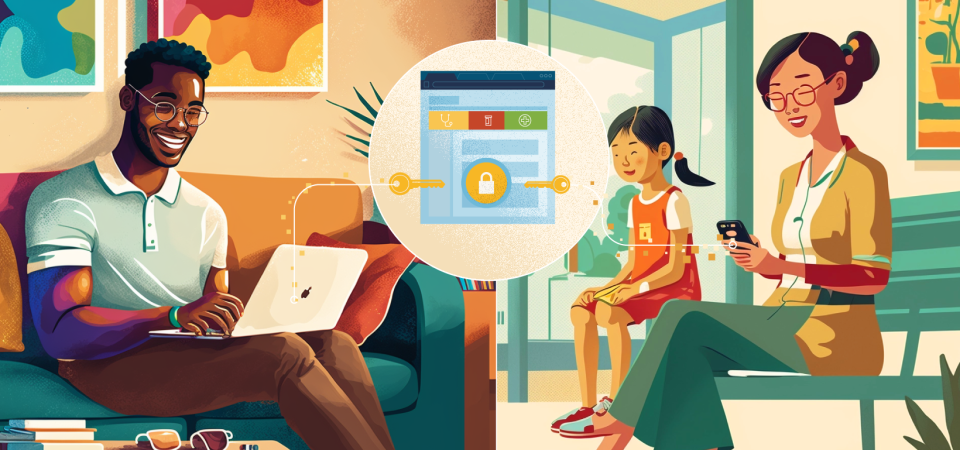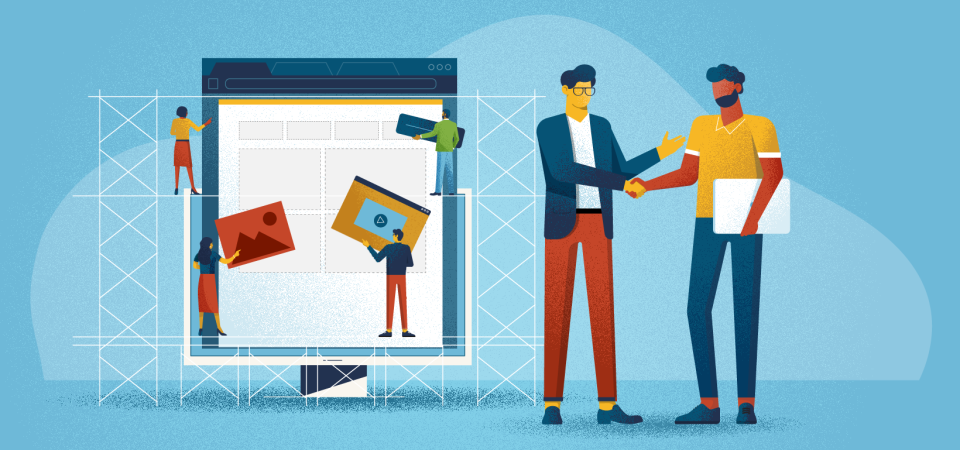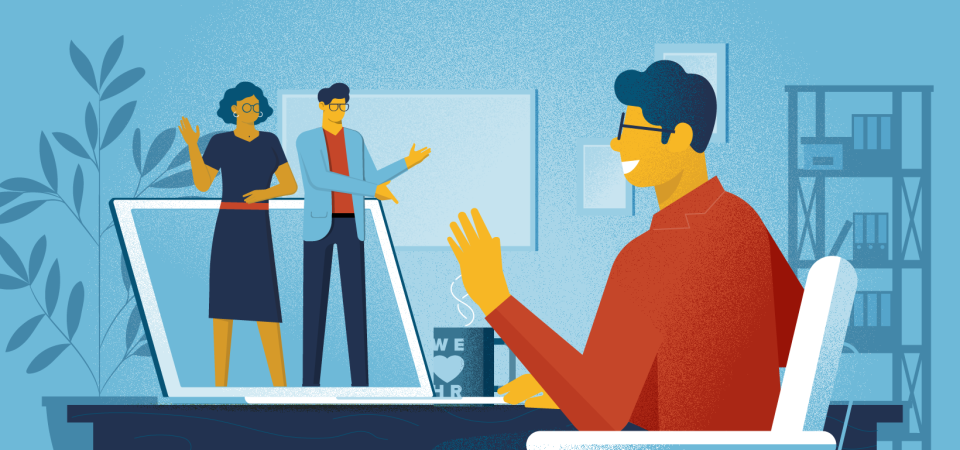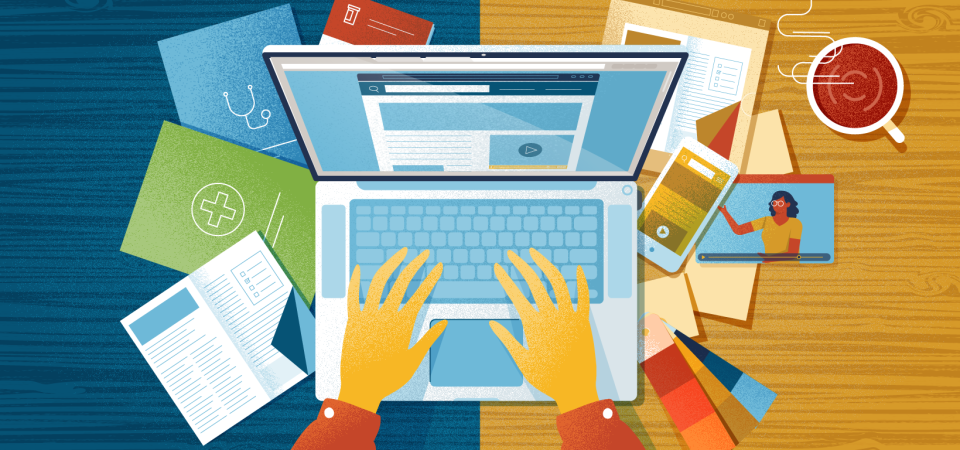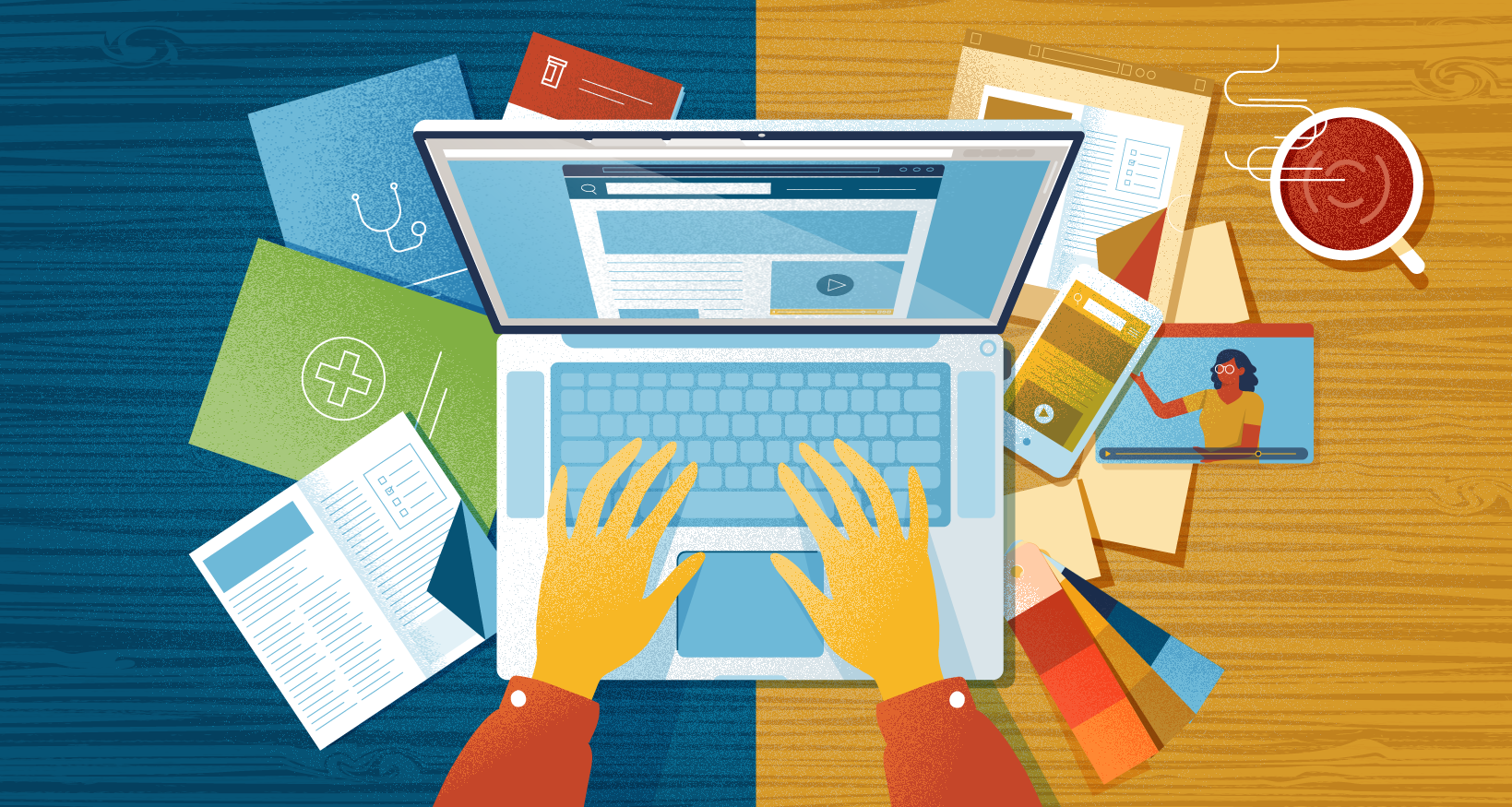
Giving designers a more integral role on HR teams can help companies stand out in a competitive job market by creating a more attractive and memorable employee experience.
In HR communications, designers are often brought in at the end of the internal communication process to add a visual component or “make it pretty.” However, this approach misses out on the valuable contributions that designers can make to the communication process. Just like everyone’s favorite movie dad Bryan Mills, designers bring a “particular set of skills” that can help HR teams better understand their audience, create more effective communication, and elevate their internal marketing efforts.

1. Selling HR and Their Products
HR teams have a bit of a reputation for only being there when things go wrong or in times of crisis. But it’s time to change that perception. To do that, HR teams need to show employees how they provide valuable services all the time, not just in tough times.
Employer engagement strategist Luke Johnson recommends that HR teams view themselves as marketers, employees as their customers, and the different roles HR serves as products they need to advertise. He adds that
“…the shift in mindset begins with communication. HR needs to do a better job educating their customers about what HR does — and how that contributes to their workplace experience.”
Designers have an advantage here, as they are used to finding out what their target market wants in order to tailor messages and aesthetics accordingly. This type of audience research is key to Employee Experience (EX) design and it’s becoming an increasingly vital part of HR’s responsibilities. As Adam DeRose recently wrote for HR Brew,
“Employee experience (EX) pros say that constant feedback solicitation from employees, listening sessions, and collaborative design are the keys to creating a workplace that will attract and keep employees.”
Furthermore, designers can help HR teams come up with novel ideas to serve those audience needs and grab their attention. Because designers are not subject matter experts in human capital management, they’re not constrained by the same subject matter expertise that can prevent you from seeing creative ways to present your service… sorry, HR products… to non-HR people.
Involving designers in internal marketing efforts doesn’t have to be as involved as creating an entire campaign for a specific intuitive like Unilever did with its Unmute project. It could start with a smaller deliverable like creating stylish onboarding kits for new hires or re-branding an HR newsletter.

2. Elevating Corporate Culture as a Competitive Advantage
Engaging internal marketing is a pivotal part of creating an environment that employees want to work in. Linda Nummelin, Consultant at BCG, says “Having horrible – or great – people processes determines a lot what is spoken about the organization and whether employees feel they can advocate it.”
With today’s fiercely competitive job market and short employee tenures, companies need to focus on making employees feel valued in order to stand out. Jenny Busing, an Experience Design educator was recently quoted saying,
“Now you’ll see that millennials and Gen Z are just not going to work at places that have a suboptimal employee experience.”
Neglecting employee communication and putting out low-quality content compared to a company’s external campaigns sends the message that the company doesn’t care about its employees. But designers can change that.
Not just in the obvious ways like elevating the production value of hR communication initiatives. But also by helping HR communications teams create meaningful experiences for their staff at every stage of the employee life cycle. For example, instead of the typical first-day packet to welcome new hires, what about an interactive map to get them acquainted with their surroundings?

3. Effectively Communicating to Employees Wherever They Work
As companies move towards a more hybrid workforce, it’s crucial to have effective multi-channel HR communication in place so employees can get accurate and timely information, whether they prefer email, direct mailers, or text messages.
As Luke Johnson said,
“With many people now working from home, companies need to find authentic and creative ways to engage their workforce. This means identifying and creating communication rituals that maintain (or reimagine) company culture and community.”
At the very least designers can provide valuable support by creating specific versions of HR collateral that are best suited for each channel, such as converting the dense paragraphs of a benefits brochure into bite-sized infographics for a microsite, social media, or even an explainer video.
But designers can also come up with new methods to reach employees – whether through adopting new channels, like social media, and text messaging, or using existing channels in innovative ways.
By designing multi-channel communication strategies that resonate with employees, companies can ensure their staff feels heard and connected to the organization.

4. Making Important Information Easy to Understand
Finally, I know I’ve been talking about how Design can help HR professionals in more ways than just making things look good, but let’s not forget how important that is too. As Luke Johnson puts it, “There is a perception that HR’s content is boring — mind-numbingly boring. The great challenge for a designer is how to make this information engaging, simple, and human.”
This often stems from the fact that there is a lack of investment in internal marketing compared to its flashier external counterpart. This is sad as I would argue it’s just as important for employers to promote mental health services internally as it is to promote a product upgrade externally. Employee engagement is just as vital to the bottom line as customer engagement.
HR content plays a huge role in employees’ lives, especially during emergencies. So, when HR communication or content is poorly designed, it makes it hard for employees to find the information they need when they need it most. Imagine an employee trying to access the relevant benefits detail when they have to make a tough medical decision. In these cases, bad design only adds to the stress and makes it less likely for them to take the steps they need to stay safe and secure.
Designers can help an HR professional create vital content in a way that’s easy to use, and understand, so their teams feel empowered, not bored when making decisions.
So, to Wrap Up…
Designers can bring a lot to the table for HR communication and internal marketing. They can help the HR team better understand their audience, optimize for multiple channels regardless of where they work, and, of course, make sure HR’s content is interesting and easy to understand.
Incorporating designers into HR discussions may seem like a luxury to some, but, in today’s job market, companies must focus on employee engagement by creating a positive employee experience to stay competitive. In a world where job options are abundant, the way employees feel valued and their willingness to spread that positive perception of the company can be the determining factor in attracting top talent.

